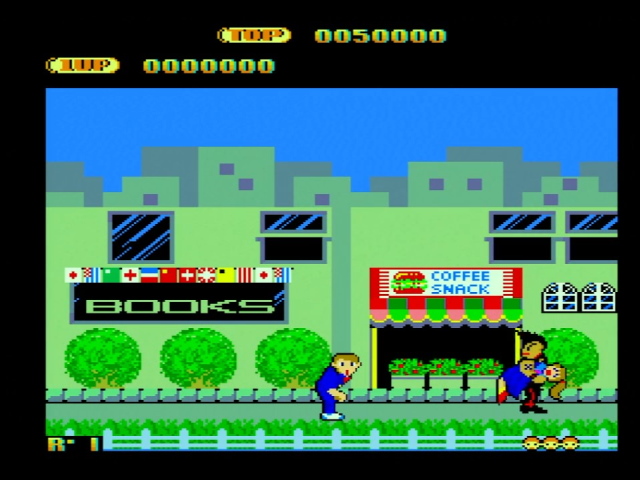-
Apple II Audio and the Mockingboard
Remember this was a retrocomputing blog? A certain cookie company remembers, but if they want their name shout-out they’re going to have to send me some cookies. Today, we’re going to pick that up again, and look at fixing one of the major weak points of my lovely Apple ][plus: its audio capability. Let’s break out the AY-3s and dig in!
-
Upscaling from the Perspective of my own Pixel Game Art
A question often asked in the topic of upscalers and retro gaming is, what did the artist intend? I am not a great artist. But having done nearly all the graphics for my games, even if it’s just a step above “programmer art”, still gives me some opinions. So let’s take a look at Space Ava 201, and I’ll tell you what I think about different ways to play it, and my own opinions. You can consider this a follow-up to my post about making graphics; this is about looking at them.
-
The Pioneer LaserActive and the RetroTINK-5X: A Match Made in Heaven?
In the past, I’ve noted that the Pioneer LaserActive is one of the toughest nuts for upscalers to crack. It combines a game library consisting of fast-paced FMV crosshair shooters and quick-time event games like Triad Stone all in 240p, with a need for high-quality 480i deinterlacing for its use as a LaserDisc video player. All of this must be done over composite video, the “native language” of the LaserDisc video format, which can make matters particularly complex when using it to play Sega Genesis games, since that system’s timing causes issues with composite video. Since Mike Chi’s past RetroTINK devices have had good handling of composite video, I was pretty excited to try his newest device.
-
The Sega Master System: Third Mark's the Charm
Oops, I did it again; a section that was supposed to be a smaller part of an upcoming blog post came into being as its own giant post. Here, we’re talking about Sega’s first home console to achieve American release, and where I’m planning to make a new project on: the Master System. Or the Mark III. Or the Sega System, with its mastery depending on bundle. Or…
-
Alf 2: Collision Detection is Hard, Blog Posts are Harder
Remember Alf? He’s back, much sooner than I expected. In fact, I wasn’t expecting to cover this topic again. But the post on Alf has proven to be one of the most successful in the history of this blog, and it wasn’t very clear about my conclusions, and I could’ve done better, so let’s pick this up and beat this topic into the dust.
-
Holding out for My Hero: The Sega System 1
I promised you a deeper dive into the Sega System 1 arcade system in the Pitfall II article. And now we get it– let’s never say I don’t keep a non-zero fraction of my promises. We’ll also take a look at another System 1 game, My Hero, and look at how the game was ported to the Mark III/Sega Master System.
-
Collision Detection is Hard: The Story of Alf
Today we’re talking about ALF. It’s a surprising move for Nicole Express; we do not condone cat-eating. But neither did Alf, eventually. In any case, we’re not here to talk about the television show (which I’ve never seen) or the pogs; we’re here to talk about ALF for the Sega Master System. By request!

